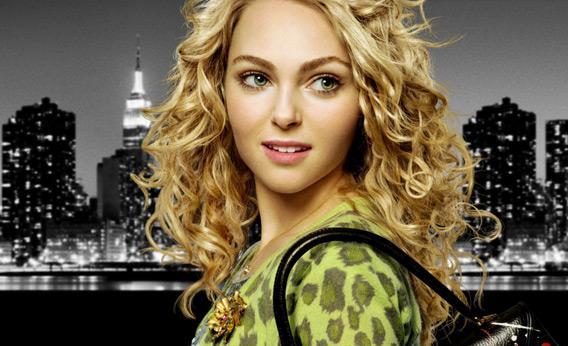The first trailer for The Carrie Diaries, the CW’s adaptation of Candace Bushnell’s prequel to Sex and the City that follows Carrie Bradshaw as a high school student, dropped on Friday. Thus far, it looks exactly like what you’d expect from a CW show: the clothes are fabulous, the cast diverse, the interactions moderately cutting. But if The Carrie Diaries wants to be more than a formula, and the CW wants to capture what drew its target audience to Sex and the City in the first place, here are four lessons the show’s creative team should consider from the original.
1. Friendships are the real romance: One thing Sex and the City always got right was the idea that female friendships were something more than the home base a lady returns to for support as she continues her all-consuming quest to find a man. The relationships between Carrie, Miranda, Samantha, and Charlotte were as intense and as fraught as their relationships with men. They fought, hurt each other, made mistakes, had misunderstandings, told lies. The Carrie Diaries is going to focus on Carrie’s senior year of high school and move to New York, and as such, it should generate its primary drama out of the strain that transition puts on Carrie’s friendships. It would be awfully boring to see the show default to the standard high school drama that’s plaguing the CW’s medical drama, Emily Owens, MD, right now. Down with the bullying storylines, and up with genuinely complex looks at female friendship.
2. There is no such thing as a perfect man: Friendships may have been at the center of Sex and the City, but the show was more clear-eyed than it ever got credit for in its assessment of romantic relationships. The women of the show may have all ended up with their soul mates, but they did so after questioning their core assumptions about what they needed in a significant other. Miranda thought she wanted a white-collar partner but ended up with bartender Steve; after marrying the WASP of her dreams, Charlotte later learned that sexual heat can come in a bald, slightly paunchy Jewish package when she met Harry; Samantha discovered that monogamy has its own fringe benefits. And while Mr. Big made a grand journey to Paris to rescue Carrie in the series finale, he was still the same guy, with the same communication issues and a tendency to substitute flip wit for honesty. He wasn’t perfect. The Carrie Diaries should remember that compromise and growth are always more interesting than Prince Charming.
3. Carrie’s youth wasn’t all tutus and fantastic heels: One thing I’ve been curious about with The Carrie Diaries is whether the show would have the guts to address the unplanned pregnancies Carrie and Samantha experienced when they were younger, and which they chose to terminate. Right now, it looks like the show will stick with safer territory for its big trauma: the network staple of dead moms. Let’s hope the show at least presents a better version of young city living than the antiseptic artistic poverty of Glee or the faux-dangerous Brooklyn of 2 Broke Girls. Sex and the City may have been fantasy, but it also could be strikingly honest about how Carrie’s dumb financial decisions—all those shoes—impacted her attempts at a more grown-up life, as when her building went co-op and she couldn’t afford her apartment without a lift from Charlotte. The Carrie Diaries should be more honest than this trailer looks about what it takes to make it in New York.
4. New York in the eighties had specific glamour—and specific challenges: Carrie and Charlotte’s gay best friends Stanford and Anthony played a major role in the original series, and she’ll have another one, Walt (Brendan Dooling), in The Carrie Diaries. But The Carrie Diaries will also be a lot more interesting and specific if the show addresses what it means to move to New York City in the heights of the AIDS crisis, which had a huge impact on the artistic and fashion communities that Carrie would have gravitated toward. (All those condoms in the Sex and the City pilot must be as much a legacy of the safe-sex movement as of Carrie’s desire to have sex like a man.) Given that Carrie’s mentor in the show is meant to be an Interview magazine stylist, there would be something weird and dishonest, not to mention a sacrifice of excellent potential storylines, about putting Carrie in the heart of 1980s New York without acknowledging what was happening in the city at that time.
